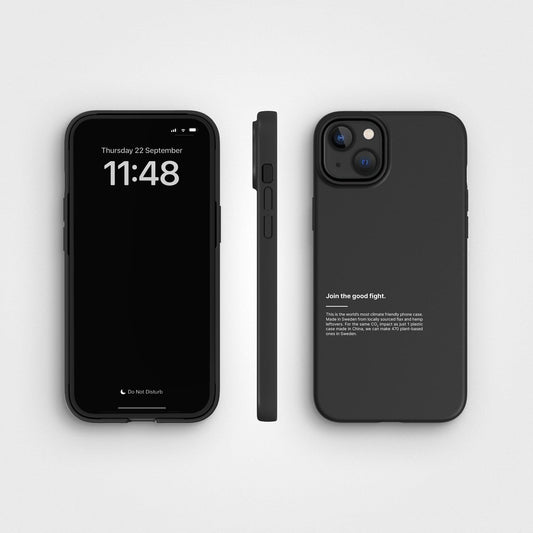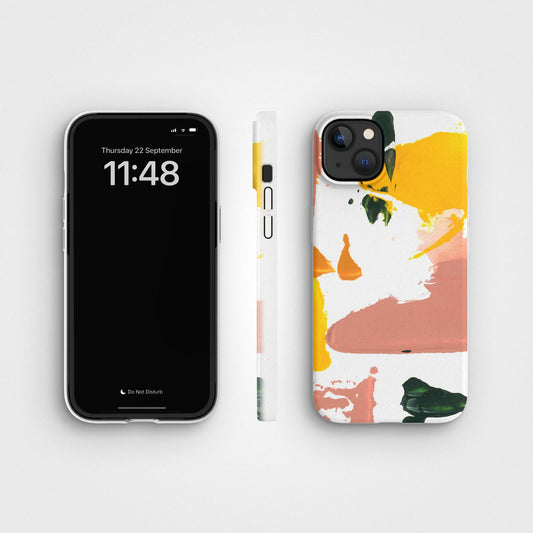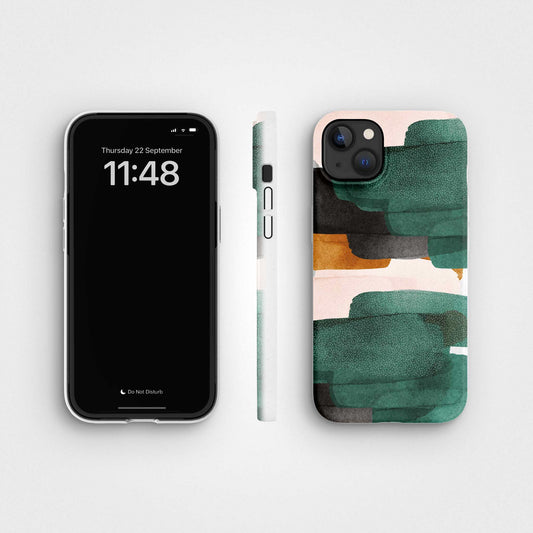Taking care of your mental wellbeing is just as important as your physical wellbeing. Modern life is not without its stresses, particularly right now, and we’re constantly being bombarded with new distractions.
We spoke to mindfulness and yoga instructor Oneika Mays about how practising mindfulness can be used to improve concentration, relieve stress, and break bad habits.
We explore what types of mindfulness exist, how mindfulness can benefit you, and where and how to get started. Turns out it can be beneficial for the environmental movement as well.

So what is mindfulness?
“Being mindful is paying attention to what is going on right now and looking at it with compassionate eyes.”
Often we get caught up in ruminating about the past or worrying too much about the future. Mindfulness is about being present in the moment. It’s taking some time out to yourself, switching off the autopilot and tuning into your thoughts, feelings and the world around you. It can be practised when performing simple tasks like eating or gardening, as well through yoga, exercise or meditation.
“Meditation can do a couple of things. One is concentration. Using your mind to identity when you wander off and by concentrating on your breath bring yourself back.”
It’s estimated that on average we only focus on what we’re doing for 47% of the day, so much of the time we’re acting on autopilot. This can result in a lack of productivity, or lead to unwelcome behaviours such as binging Netflix or eating a whole packet of biscuits before you’ve even noticed!
Simple exercises like taking a couple of minutes to concentrate on the flow of your breath, for example, can help you to remain focused throughout the day. This works by training your brain to catch when it’s wandering. Over time you get progressively better at bringing it back to the present moment and remain more focused.

Going a little deeper, mindfulness practices can also help deal with stress, anxiety, addiction and even physical pain. In her role as a meditation coach, Oneika works with people who are incarcerated at the notorious Rikers Island Prison in New York to use mindfulness meditation to aid with their rehabilitation and help them through the experience.
But this requires a bit of training and, as Oneika warns, can be a “triggering experience if you’re not fully aware of the landscape going on inside you.”
The trick is to be gentle with yourself.
“Meditation is allowing yourself to be gentle. It’s not something you should force yourself into it, not like ‘no pain no gain’. It’s about allowing yourself to go slow and be soft and see what happens.”

Oneika in NY
Through her work at Rikers Island, she’s able to help inmates maintain a sense of connection with wider society and prevent them from becoming overwhelmed by their environment. It might be difficult to imagine these ‘hard men’ doing yoga or meditating, but Oneika is quick to establish that they’re just like everyone else.
“Whether we’re in jail or not in jail, a lot of time we feel empty and we try to fill those holes with whatever our pattern is, some people turn to things that get them in trouble, or whether it’s shopping, or sex, or drinking, or all the things that we do that can give us that instant sense of gratification. But practices like meditation or walking or whatever that thing is that allows you to have a conversation with yourself, that’s what fills the hole, allows us to be complete. Then we can let go of thinking that things will make us feel good.”

So actually an added benefit of mindfulness is that it can help us to be more conscious consumers, or at least break bad consumption habits.
But, whilst finding happiness from healthy sources is a benefit, contrary to some popular representations, it’s not about being super chill or reaching a state of eternal happiness, either.
“There’s a sense that we always have to feel good. It’s not okay not to say “I’m not fine”. What is really empowering, builds resilience and is important for mental health is to actually acknowledge what you’re feeling inside. Only when we notice and acknowledge it can we deal with it.
We want to push things away and pretend it’s not happening. In the spiritual yoga world we call this spiritual bypassing. A lot of these people use these practices to pretend that they’re okay, ‘I meditate, I’m chill so nothing ever bothers me’, and there’s the common image of Buddha sitting under a tree. That’s not the point of meditation at all. It’s allowing yourself to meet this experience of life with tools that help you deal with it.

My mum just started meditation, for years she thought she had to quiet her mind. That’s not what meditation, or managing mental health, is about. It’s saying that I feel angry, or I feel unhappy, or I’m anxious, and what tools can I use to help regulate those emotions so I can recognise them, acknowledge them and do things like breathing, or meditating or walking or talking to somebody to return to a state of homeostasis.”
To summarise this section, mindfulness is:
- Taking the time in your life to be present and focus on the here and now
- Identifying and acknowledging your inner thoughts and emotions
- Being gentle, compassionate and non-judgmental with yourself
It can help you to be:
- Be more focused
- Relieve stress and anxiety
- Break bad habits
- Feel more connected with others
- Make more conscious decisions
Changing the world starts inside
“If you could commit to having a conversation with yourself for three minutes for three days a week about how you could show up differently to the world, then by the end of the year you’ll have done quite a bit of work.”
To some degree we’d all like to make the world a better place, to stand up for what we believe in. But it can be overwhelming and difficult to know where to begin. It’s completely understandable that we’re anxious and overwhelmed by climate change and other social issues.
Recent research into the psychology surrounding climate change calls this climate change anxiety, or how the trauma caused by the environmental crisis can result in a lack of action or denial. But, taking the time to acknowledge these emotions can help us to engage with it more effectively as individuals and collectively.
“We’re used to being disconnected, finding things too overwhelming — I’m not going to do anything because I can’t do anything [as an individual] anyway. Work starts within. We need to focus externally, take care of climate and acknowledge injustices happening in the world.
But to do that, and to understand our own role, starts by having an honest, gentle and compassionate conversation with ourselves. When you come from a place where you’re whole and connected and compassionate, you have really no choice but to be compassionate and understand your connection with the world.”

This can be described as a form of “internal activism” that allows us to overcome our natural psychological defences and believe that our actions can make a difference. We can then spread the message in a way that doesn’t cause psychological harm to others.
“Normalising experiences is very powerful. If you’re part of a community that’s being oppressed of course you can be angry, there’s no need to push that down. But it’s about having safe and compassionate practices to let that come out in a way that’s healthy and safe and makes sense."
How to get started with mindfulness
Mindfulness can really be practiced anywhere and there are few techniques to try. But, if you’re just starting with a meditation practice, Oneika recommends that finding a group is really helpful, either in the real world or online. There are also some great apps such as Insight Timer (free), Calm and sites like Yoga International.
For those in the US, Oneika also runs a Zoom class on Mondays (7pm Eastern) called Metta Meditation that is designed to help people relax and promote feelings of kindness and compassion.
She also recommends getting out into nature. “Finding connections with nature is a powerful way of promoting the idea that we’re all interdependent which is a powerful impetus for healing.” This may sound a little 'hippy', but being in nature has been found to have healing powers and is even prescribed by some doctors.
Here are some simple mindfulness exercises to get you started. Remember to remain non-judgmental. Your thoughts will wander off and that’s ok.
Breathing exercise
One simple mindfulness practice is to take two minutes to close your eyes and concentrate on your breathing. Your breath acts like an anchor, when your attention shifts gently anchor it back to your breathing.
1) Find a quiet spot
2) Sit comfortably on a straight backed chair and close your eyes
3) Concentrate on your breath, specifically the rise and fall of your abdomen
4) Focus all your attention on your entire breathing process, from the beginning of your inhale to the very end of your exhale
5) When your attention shifts, gently bring it back to your breathing.
This is a really nice exercise to help you clear your mind in the mornings and throughout the day. Set a timer for 3 minutes initially and work your way up from there. The important part of this technique is noticing when that's happening and shifting it back to your breathing.
Candle Study
They say fire is nature's TV. In this exercise light your favourite candle, sit comfortably, and watch the flame sway and flicker for ten minutes or so whilst letting your mind wander. Notice what thoughts enter your mind and let them pass without judgement.
The Name Game
If your thoughts are running a bit fast then this is a simple game to them get them in check.
Look around and name three things you can hear, for example the sound of a bird outside or your coworker typing, then two things you can see, and finally one sensation that you feel.
Doing so it will increase your awareness of your body and environment and ground yourself.
Finally, the trick to mindfulness practice is to, well, practice. Let us know how you get on, or if you have anything that works for you already
~
We hope you found this fun and informative. If you have any questions or ideas about this (or anything really) feel free to get in touch with Emilia Cullborg, Editor and Head of Communication & Community Outreach.





























